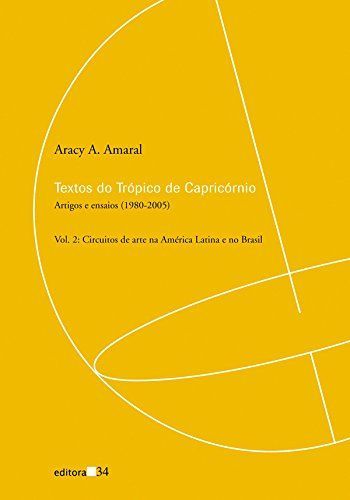
Textos do Trópico de Capricórnio: Circuitos de arte na América Latina e no Brasil
Aracy Amaral constructs a careful criticism and history of modern and contemporary art in Brazil. She was director of the Pinacoteca do Estado de Sao Paulo (1975-1979) and the Museum of Contemporary Art, University of SÀo Paulo (1982-1986 ). Amaral combines the thorough work of the researcher provision of combative intellectual who constantly asks about the place of art and the artist in society. The three volumes of texts of the Tropic of Capricorn bring together some 150 articles, essays and interviews conducted by the author from the beginning of the 80s and 2005, providing a point of view very rich for the reader who wants to be fully informed about the development of fine arts in our time. Modernism, modern art and commitment to the place, the first title of the collection, paints a picture of Brazilian modernism, from its beginning until the unfolding of the 50's, without ever losing sight of their relationship to the international scene, and the crossings between aesthetics and politics that characterize the modern and contemporary art. Circuits of art in Latin America and Brazil, the second volume, has written in the Latin American cultural reality, discussing, among other topics, the issue of Brazilian art integration on the continent. In this context, the author devotes special attention to the multiple relationships between the circuits of art and urban areas, particularly in Third World countries.The third volume of the collection, Contemporary artists Biennial in Brazil, begins with a comprehensive reflection on the role of the Sao Paulo Biennial, in light of its history and the comparison with models such as Documenta in Kassel, Germany, and the Venice Biennale , In Italy. The second part begins with a conversation with Helio Oiticica, held in New York in 1977 - and until now unknown - and then presents a portrait of dozens of Brazilian artists working in the 80s and 90s, many of them caught here as they emerged in the cultural scene.